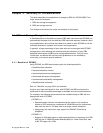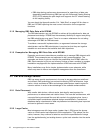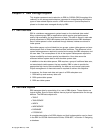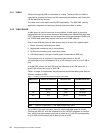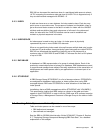
6 Storage Management with DB2 for OS/390
• DB2 data sharing performance improvement for open/close of data sets
(especially beneficial during DB2 start-up) with Enhanced Catalog Sharing
(ECS); ECS reduces the path length and supports the ICF shared catalog
on the coupling facility.
You can check the Appendix section G.4, “Web Sites” on page 242 for sites on
DB2 and DFSMS reporting the most current information on the supported
functions.
2.1.2 Managing DB2 Data Sets with DFSMS
The DB2 adminstrator can use DFSMS to achieve all the objectives for data set
placement and design. DFSMS has the necessary flexibility to support everything
the DB2 administrator may want. There is no reason whatsoever for not taking
advantage of DFSMS for DB2 data sets.
To achieve a successful implementation, an agreement between the storage
administrator and the DB2 administrator is required so that they can together
establish an environment that satisfies both their objectives.
2.1.3 Examples for Managing DB2 Data Sets with DFSMS
Examples are shown to describe one possible way to manage DB2 data sets with
DFSMS. These examples are not supposed to be a recommendation. The
examples are shown to give an idea on the possibilities that DFSMS offers for
DB2. Each example is just one out of many choices of how a medium to complex
installation may approach the implementation of DB2 data sets with DFSMS.
Many installations may find a simpler implementation more adequate, while
others may want to have a more specific management than the one shown.
2.2 DB2 and Storage Servers
DB2 has some special requirements in the way its storage objects are defined
and utilized. Disk technology has evolved introducing RAID architecture, large
cache, virtual architecture. DBAs and storage administrators need to agree on
common actions in order to take advantage of the available enhancements.
2.2.1 Data Placement
With smaller disk devices, without cache, data locality was important for
performance, to reduce seek and rotation times. The new disk architectures, with
concepts like log structured files and with cache in the gigabyte sizes, have a
noticeable impact on database physical design considerations. Conventional
database design rules based on data set placement are becoming less important
and can be ignored in most cases.
2.2.2 Large Cache
Most storage servers with large cache (greater than 1 GB) ignore the bypass
cache or inhibit cache load requests from the application. They always use the
cache; however, they continue to take into account the specifications of usage
from the applications by just scaling down or up the track retention into the cache
for reuse.










